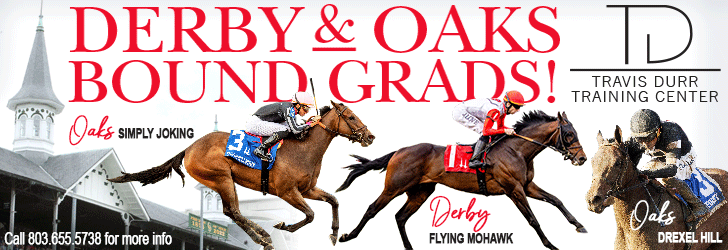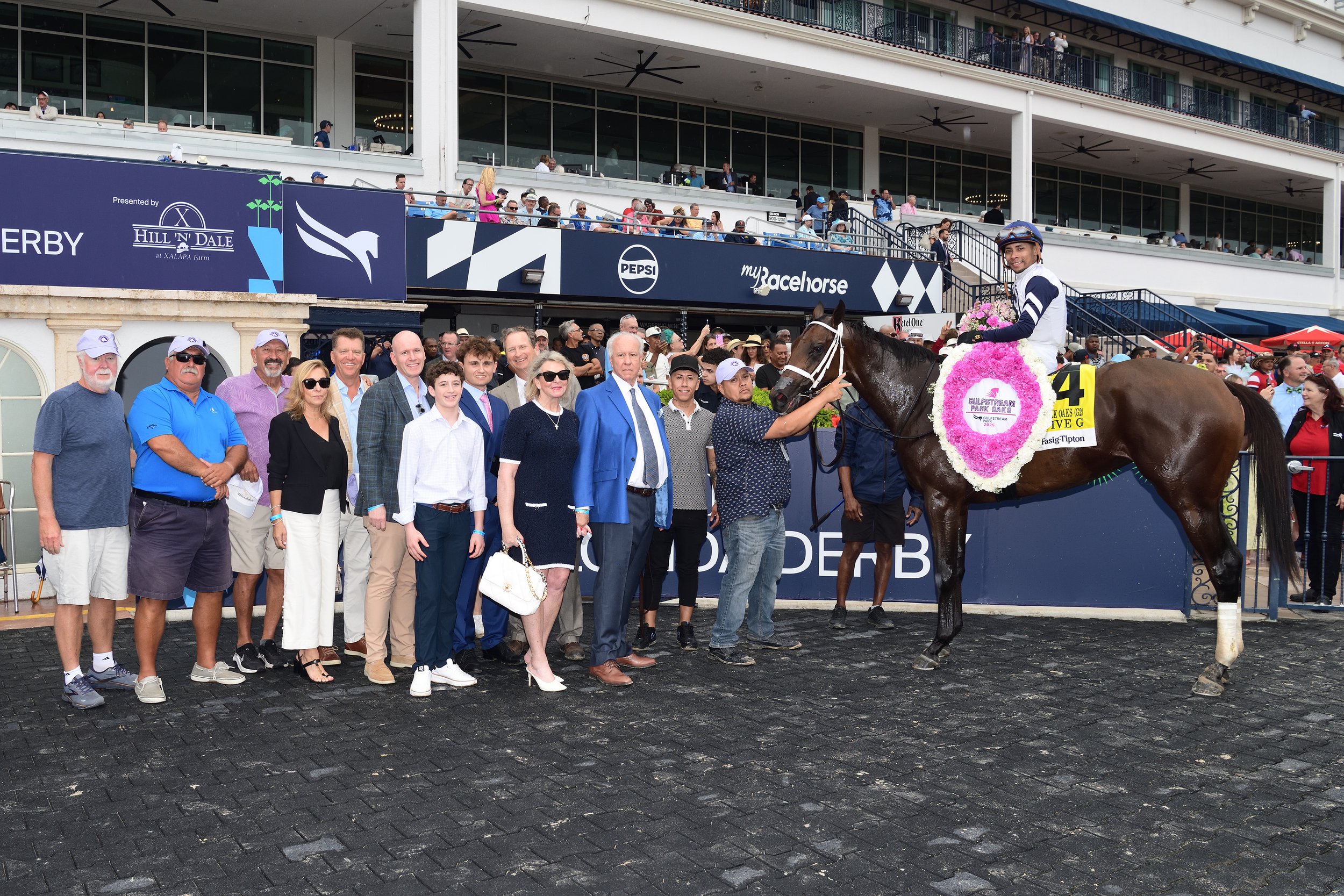Kentucky Oaks 2025 owners - Kristian Villante, Kyle Zorn, Travis Durr of Legion Racing with Drexel Hill
/The three musketeers of Legion Racing, Kristian Villante, Kyle Zorn and Travis Durr, are on quite a tear. Last year, their Honor Marie finished second in the Louisiana Derby, then competed in the Kentucky Derby, the Belmont Stakes and the Travers Stakes, finishing eighth, fourth and eighth. This year, their filly Drexel Hill has them primed for the Kentucky Oaks off a victory in the $200,000 Busher Invitational at Aqueduct, March 1st.
Considering they started Legion Bloodstock, their full-service bloodstock agency, only four years ago, it’s rather amazing.
“I think, truthfully, why we’ve been very successful is that we all see eye to eye,” Villante said. “There are no egos. Just one team. The people we have assembled all kind of share the same vision. We all see eye-to-eye. We’re all doing this because we love it. It’s just a belief in ourselves. Everyone’s able to feed off each other and build off each other. Myself, Travis and Kyle had been very good friends before we started Legion, so it’s like three brothers.”
Or three musketeers.
“It’s very easy,” Villante continued. “It’s fun to do every day. We’re always on the same page. We can kind of make our own little footprint and prove ourselves.”
They chose another friend, a young trainer who just went out on his own, to lead them, and Whit Beckham has delivered, training both Honor Marie and Drexel Hill. Beckman worked for Todd Pletcher, Eoin Harty and Chad Brown before going on his own in 2022. “I think we had all this confidence knowing Whit,”
Villante said. “He’s done a great job building in the last two years; the passion he has for it; the horsemanship second to none. He just has a way with all these horses. She (Drexel Hill) is a prime example of that.”
Beckman is enjoying working with his friends at Legion: “I’ve known Kristian and Kyle for the last 15 years. Me and Kyle actually grew up together in Louisville and went to the same high school. I worked with Kristian for Todd Pletcher, so we became pretty good friends back in the day. Travis, he’s been selling horses for so long and has a training center in South Carolina. So he really has a good feel for buying a young horse. Kyle is as sharp as the other two. Kristian always said, `If you go on your own, we’ll make sure you get a barn full of good horses.’ So they made good on their promise. We’ve had a lot of luck together. They’re all super sharp horseman.”
Durr has certainly made a huge difference in Beckman’s stable, sending him Simply Joking, a three-year-old filly who won two stakes and finished second in the Gr. 2 Fantasy Stakes, and three-year-old colt Flying Mohawk, who was second in the Gr. 3 Jeff Ruby. Neither are owned by Legion.
Durr’s interest in horses traces back to his grandfather and father, who both raced Quarter Horses: “We always had horses. We used to go to Texas, Delta Downs. I started riding at the bush tracks.”
At the age of 12, he rode races on bush tracks in Georgia and South and North Carolina. As his family transitioned to Thoroughbreds, Durr began breaking young horses for his father and grandfather.
When his father died in 1995, Durr took over the family business. He began breaking horses in St. George, South Carolina, for local clients in 2007. He then joined the Webb Carroll Training Center in Matthews, South Carolina. In October, 2016, Durr and his wife Ashley then purchased the training center from Carroll.
“Time has flown by,” Durr said. “Me and Kristian have been buddies for a while, working with me with Webb. I started buying horses for the training center for myself. We’d look at horses together. We liked the same type of horses. We started the racing groups based on me and Kristian buying yearlings at Keeneland for $20,000 and it was tough.”
Now they spend more, but not a lot more. Honor Marie cost $40,000; Drexel Hill $50,000. “Me and Kristian talk four times a day,” Durr said. “We’re pretty good buddies. We all work together. It still doesn’t feel like a job a lot of days. We still get to enjoy what we do.”
Zorn also traces his love of racing back to his grandparents: “From the time I was ready to walk, two or three years old. I just loved it. Everybody had their favorite jockey: Patty Cooksey and Pat Day and Jerry Bailey. I still have signed goggles. The track was always a fun place to go.”
Zorn worked at a training center, then for trainer Pat Byrne, eventually becoming his assistant trainer. Then Zorn helped Maribeth Sandford, the owner of Take Charge Indy, when her husband passed away from cancer: “Maribeth was left with all the pieces. She needed help and I took a job helping her. That’s how I met Travis Durr. We became friends right away. And through Travis, I met Kristian. I was good friends with Whit. We’ve been very blessed.”
Villante grew up in Philadelphia: “I just kind of always loved horses in general, not necessarily horse racing. My dad [Joe] had a friend, Scott Lake. I was 12 or 13. I went to Parx. They’re amazing animals to be around. Scott took me under his wing. Did I have any idea of what I was going to do this? No.”
He did after working for Todd Pletcher and meeting Beckman: “We had very similar personalities. We became friends and it kind of grew.”
Still. One for all and all for one.


































